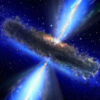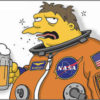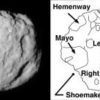The world’s most complex ground-based astronomy observatory, the Atacama Large Millimeter/submillimeter Array (ALMA) in northern Chile, has captured its first image – a pair of colliding galaxies. The detailed view of the merging Antennae Galaxies confirms that the ALMA array – which is still only one-third complete – will eventually allow astronomers to explore some […]










